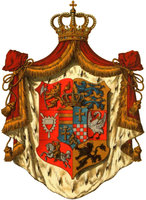Categories Online-Shop Germany German Coins 1800-1871 Oldenburg
Oldenburg

The Duchy of Oldenburg (German: Herzogtum Oldenburg) — named after its capital, the town of Oldenburg — was a state in the north-west of present-day Germany. The duchy existed from 1180 until 1810, when it was annexed by the First French Empire. It was located near the mouth of the River Weser.
When the main lineage of the House of Oldenburg died out in 1667 with Anthony Günther, Count of Oldenburg, it fell to the Danish Royal Family. Charles Frederick of the line of the Dukes of Holstein-Gottorp married Grand Duchess Anna Petrovna of Russia, daughter of Peter the Great. Another, his first cousin, Frederick August I, became Duke of Oldenburg in 1774. One of his brothers, Adolf Frederick ,became King of Sweden. Another brother, Prince Georg Ludwig of Holstein-Gottorp, was father of Peter I, who became Grand Duke of Oldenburg in 1823. Subsequent Rulers of Oldenburg were all his descendants.
The Grand Duchy of Oldenburg (German: Großherzogtum Oldenburg) (also known as Holstein-Oldenburg) was a Grand Duchy within the German Confederation, North German Confederation, and German Empire, which consisted of three widely separated territories: Oldenburg, Eutin and Birkenfeld. It ranked tenth among the German states and had one vote in the Bundesrat of Germany and three members in the Reichstag.
|
Product no.: 00302401846 40
Oldenburg, Paul Friedrich August, Thaler 1846 B.
|
|
|
|
|
|
Product no.: 00302411866 40
Oldenburg, Nicolaus Friedrich Peter, Vereinsthaler 1866.
|
|
|
|
|




